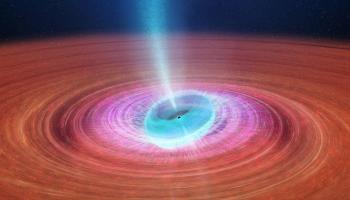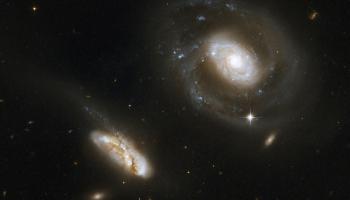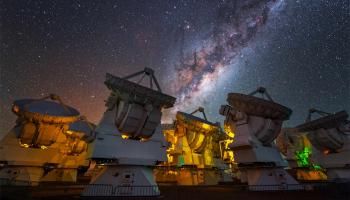We’re Living in a Space Bubble. An Undergrad Sculpted Its Magnetic Shape
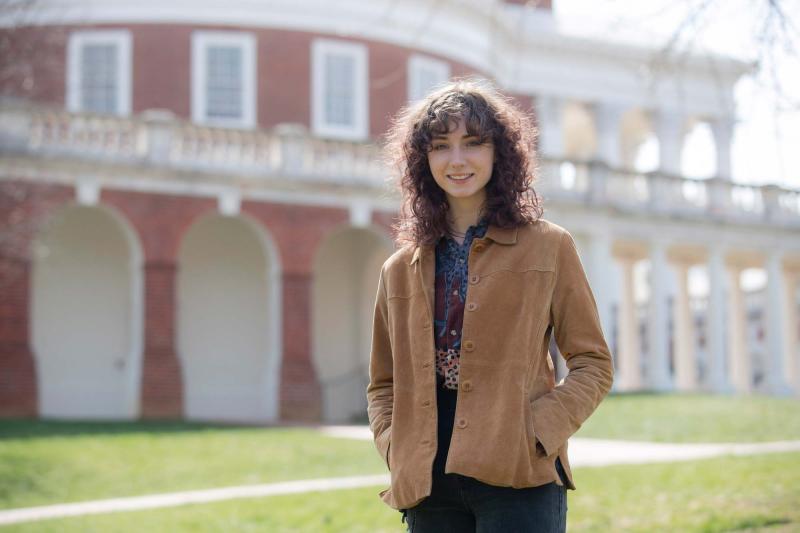
Theo O'Neill / photo by Erin Edgerton, University Communications
We all live in a gigantic, invisible space bubble. The “Local Bubble,” as astronomers call it, is a gas pocket in space about a thousand light years wide.
As a University of Virginia undergraduate student, Theo O’Neill recently created the first 3-D map of the Local Bubble’s magnetic surface.
Researchers are interested in the boundary-defining magnetic fields because they are drivers of change in our dynamic universe. The magnetism may also protect life within the bubble’s expanse, including here on Earth, from interstellar radiation.
O’Neill’s map and research design were formally presented this week at the American Astronomical Society’s annual meeting in Seattle.
“This map will allow us to explore in detail for the first time how the Local Bubble’s 3-D magnetic fields have affected the evolution and dynamics of nearby clouds of dust and gas, and the subsequent formation of some of the nearest stars and planets to our own sun,” said the newly minted astronomer, who uses gender-neutral personal pronouns. They graduated from UVA last month.
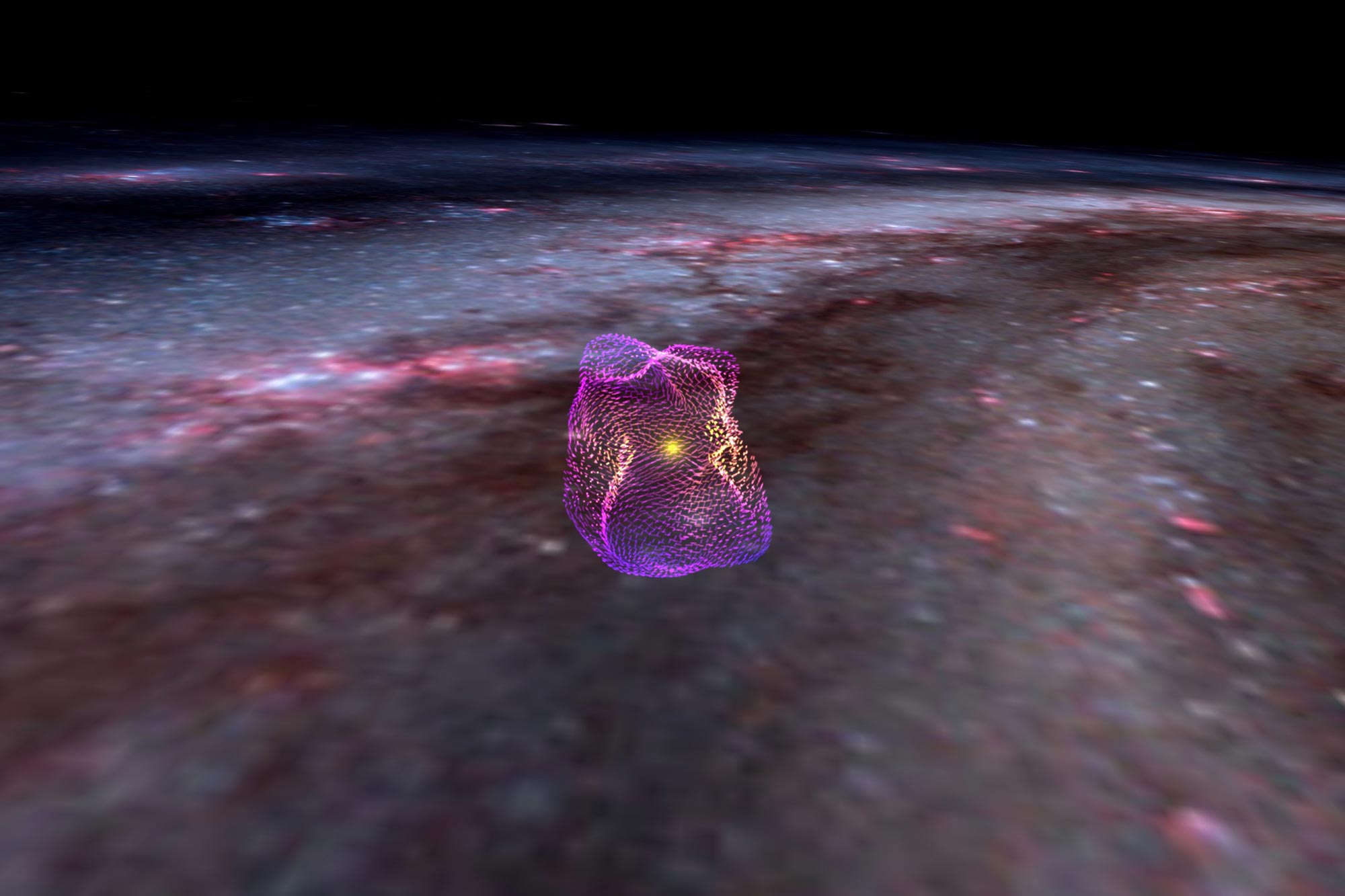
Theo O’Neill generated a magnetic map that will help astronomers better understand forces at work in the universe. (Image by Theo O’Neill and Milkyway3d.org)
O’Neill conducted the modeling as a summer intern at the Harvard-Smithsonian Center for Astrophysics, working under center astronomer and Harvard professor Alyssa Goodman.
Goodman is a co-author of the research, along with Jiwon Jesse Han of the center, Juan D. Soler of the Max Planck Institute for Astronomy and Catherine Zucker of the Space Telescope Science Institute.
Han and Zucker are also UVA graduates.
Gazing at the Invisible
For O’Neill, astronomy is a magnetic field, in part because of magnetic fields.
“In our day-to-day lives, we experience magnetic fields through applications ranging from wireless charging of our phones to our planet’s magnetic field protecting life on Earth from solar flares,” the former UVA Echols Scholar and College Science Scholar said. “Magnetic fields in space are just as pervasive, but are notoriously challenging to observe and simulate.”
The Local Bubble formed eons ago, likely the product of stars winking out of existence in an explosive finale known as a supernova.
Our solar system first entered the edge of the bubble about 5 million years ago.
“This map could reveal interactions between the Local Bubble’s magnetic field and the solar system’s magnetic heliosphere, the region of space surrounding our solar system,” they said.
In addition to its swirling magnetic regions, the bubble is surrounded by smaller clouds of dust and gas. Those clouds, influenced by magnetic fields, can form new stars. Scientists suspect that’s how the sun evolved, creating the conditions for life on our planet – and maybe other worlds.
But if the magnetic fields are invisible, how can researchers “see” what they’re mapping? Interstellar dust on the outer surface of the bubble produces heat as it interacts with the magnetic fields, O’Neill explained. The polarized light that’s generated from the heat indicates the direction of the fields.
Building On the Bubble
To create the 3-D map, O’Neill took two-dimensional maps of dust polarization culled from the former Planck space observatory and “stretched” the data over a three-dimensional model of the Local Bubble.
The fact that our solar system is located near the center of the bubble helped to round out the underlying data.
“Thanks to the Planck mission a few years back, we have all-sky maps of polarization produced by magnetically aligned dust, which allow us to make inferences about magnetic field structure,” Goodman said.
The researchers noted that the magnetic modeling hinges on the assumptions that the outside of the bubble is where the majority of polarization is produced, and that the bubble’s magnetic field is mostly confined to its expanding surface.
Being able to see these relationships in their true form will now allow astronomers to immediately begin to study both the history of nearby star formation and the behavior of other superbubbles like the Local Bubble.
The latter, O’Neill said, could lead to some governing principles.
“The role that magnetic fields play in regulating the expansion and dynamics of superbubbles is still unclear, and it’s only become possible in the last few years to start to answer these questions outside of simulations,” they said.
A Magnetic Partnership
O’Neill’s summer research was made possible by the National Science Foundation’s Research Experience for Undergraduates summer internship program.
“This internship was an amazing opportunity to take the skills I’ve learned at UVA to another institution and get experience working in a new field with other researchers,” they said.






